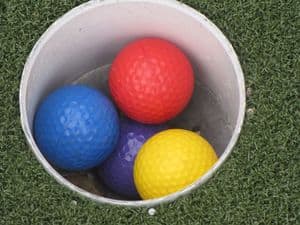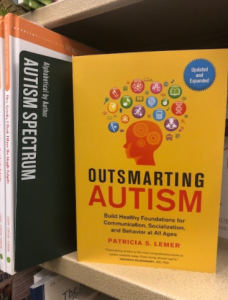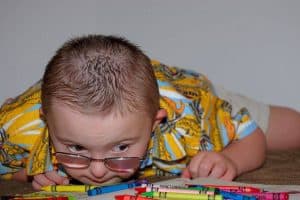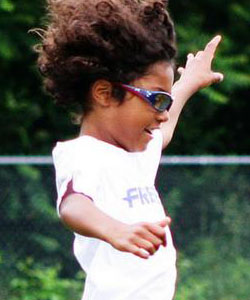What is Non-Verbal Learning Disorder (NVLD)?
NVLD can significantly impact a child’s life, however many eye doctors can provide the solution you are looking for.
When we think of learning disorders, we tend to think of dyslexia and other disorders involving language, such as difficulties decoding language and learning to read.
There is another, lesser-known type of learning disorder called non-verbal learning disorder, typically referred to as NVLD.
Non-verbal learning disorder isn’t an official diagnosis like ADHD or Autism (ASD)—though many children who have non-verbal learning challenges usually present with those diagnoses— but experts say that focusing on NVLD, instead of ADHD or ASD, can help to explain certain behaviors and difficulties associated with NVLD.
Examination of the functioning of a child’s visual system may enable increased understanding of how to best help these children succeed academically.
Recognizing NVLD patterns
There are five common areas in which children with NVLD may show weakness.
- Visual and spatial awareness
Many children with NVLD have trouble understanding visual imagery. For example, when they are asked to copy a shape like a cube, they produce profound distortions.
Children with NVLD also struggle to evaluate visual-spatial information, making it difficult to understand and recreate 3D shapes.
2. Higher-order comprehension
Higher-order comprehension is the ability to identify the main idea, the details that support the main idea, and the relationships among them. This affects reading comprehension, and the ability to write or tell a story effectively.
Difficulty with higher-order comprehension also affects the ability to take notes in class. Some children essentially write down everything the teacher says, because they are unable to decipher what is important.
Other children don’t write anything down, or write down all of the unimportant information, because they are unable to decipher what is important.
3. Social communication
Most children with NVLD have trouble reading emotions in facial cues and body language, making it difficult to understand social interactions.
Social patterns are also difficult to understand, and can cause inappropriate behavior in social situations.
Social communication difficulties are a common cause of obsessive use of technology— communicating in chat rooms or playing video games, where nonverbal communication is unessential.
4. Math concepts
Many children with NVLD are good at rote learning, allowing them to succeed in math just by memorizing data. However, as they get older they struggle to solve more advanced mathematical problems that are based on recognizing concepts and patterns.
Even with a problem they’ve seen before, if it’s approached differently or modified slightly, it will be difficult for them to recognize it.
5. Executive functions
Executive functions are a set of skills we use to organize our thinking, plan and carry out actions, and figure out how to solve problems.
Most children with NVLD struggle with organizing and planning. For instance, breaking down a project into smaller steps, or understanding the steps that need to be taken to accomplish the project, will typically be challenging for these children.
If your child has NVLD, contact an eye doctor near you that has experience managing children’s vision problems.
SEE RELATED: Vision and Sensory Processing Disorder
Non-verbal learning disorder and learning disabilities
Non-verbal learning disorder is a learning disability that affects a child’s ability to recognize and interpret patterns in facial expression, body language, and other forms of nonverbal communication.
Children with NVLD are often hyper-verbal, but have trouble correctly interpreting social situations. A child with NVLD may also have poor physical coordination and struggle with problem solving, planning, and organizing their thoughts. NVLD is not recognized as an official diagnosis by the DSM-V.
What are the symptoms of NVLD?
- Trouble understanding visual information
- Inability to read social cues, such as expressions and body language
- Difficulty identifying and understanding sarcasm
- Difficulty recognizing emotions in others
- Trouble grasping spatial relationships and judging distance
- Poor physical coordination
- Difficulty prioritizing information
- Poor problem solving skills
- Trouble with higher-level math concepts
- Hyper-talkativeness
- Difficulty breaking down a project into smaller steps
- Trouble figuring out what steps need to be taken to accomplish a task
- Poor organizational and planning skills
Are there treatments for learning difficulties from NVLD?
Yes, there are very effective treatments to improve a child’s capacity to learn, read and achieve at school.
If you are concerned about your child’s NVLD, find an eye doctor near you that can help you to significantly improve the life of your child.
As with many learning disorders, the symptoms of NVLD vary from child to child.
The first step to helping children with NVLD is to schedule a comprehensive assessment to determine your child’s individual needs.
Once your child’s symptoms are identified, learning professionals and therapists can use his profile to develop appropriate support. Children with NVLD benefit from learning social patterns and expectations, as well as intensive practice to recognize patterns and organize thoughts.
Vision therapy for NVLD
Vision therapy is an effective program to treat the vision parts contributing to the learning disability.
“Micah is one of the lucky ones, thousands of other children suffer with vision problems that are never addressed”, said Dr. A, who works at Harvard University Health Service and runs a private practice.
“More than 50 percent of the NVLD students failed vision exams, and many of these students had 20/20 eyesight”.
This infers that an in depth examination is required for all children with learning difficulties.
Two years ago, when Micah was 9, he couldn’t sit still in class or read assignments, and was unable to finish homework. His mother took him to Dr. A, an optometrist who specializes in vision therapy.
After a few months, the family saw lasting results. According to Micah’s mother, “Before, he would sit forever and cry. Hours would go by and he still wasn’t able to do his homework. Now, he says school is so much easier. He used to wear glasses all the time, and now he only wears them for reading.”
Dr. A. tested about 800 children for three major vision issues:
- Tracking
- Convergence
- Focusing
Failure of the vision test is possible even with 20/20 eyesight because the Snellen wall chart only tests whether a child can clearly see letters 20 feet away. The wall chart does not test the ability to see near objects!
NVLD and reading difficulties
Many children with NVLD often give up on reading because it’s just too hard.
The letters swim on the page, many times causing headaches. Most children do not report a reading problem because they do not realize that what they are experiencing is not normal.
Quite often, these children are mislabeled as having a learning disorder, such as ADHD or dyslexia— when in fact it is their vision that is impaired.
A study consisting of 6,000 students from New York showed that:
- 23% had vision problems
- 93% of those who were in special education programs suffered from vision problems.
Prof. Gary Orfield, a professor of education and social policy at Harvard University, stated that too often students with vision problems end up in special education classes instead of getting vision therapy, “It’s a tragic situation because these are solvable problems”.
LEARN MORE: Vision for Special Needs
Schedule an eye exam with an eye doctor near you to help improve your child’s vision.
When we think of learning disorders, we tend to think of dyslexia and other disorders involving language, such as difficulties decoding language and learning to read.
Non verbal learning disorder (NVLD) can significantly impact a child’s life, however many eye doctors can provide part of the solution to benefit your child’s school grades.









